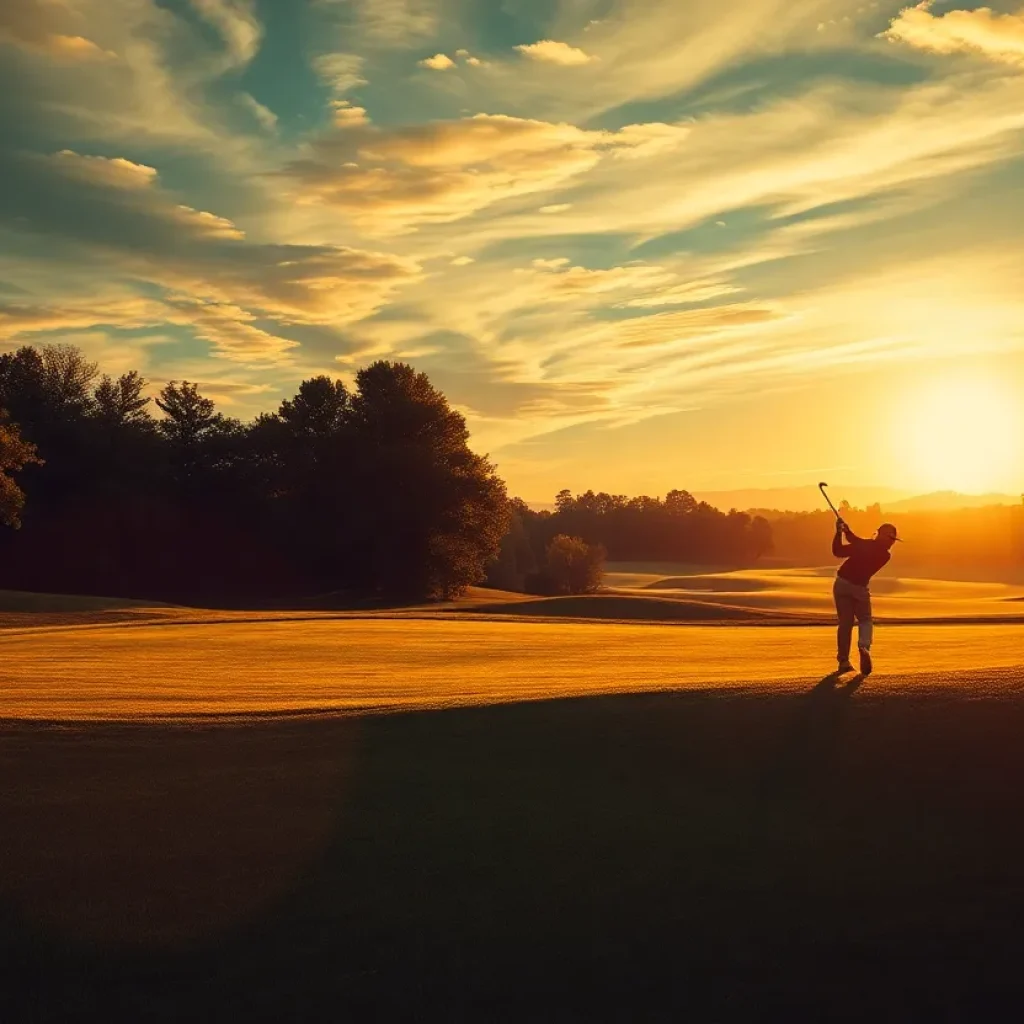Guide to Golf Course Photography for Beginners
Introduction
Golf course photography captures the beauty and intricacy of golf courses. For many, golf is not just a game; it’s a way of life, a pastime, and a journey across breathtaking landscapes. This guide aims to equip beginners with essential golf course photography tips, ensuring memorable images that showcase the allure of these outdoor spaces.
Understanding Golf Course Photography
Golf course photography is more than just taking random shots of a golf course. It involves understanding the elements that make a photograph compelling. Whether you’re taking golf travel photos or capturing the thrill of a match, the following points are critical.
The Importance of Lighting
Lighting plays a vital role in photography. Early mornings and late afternoons are ideal for capturing stunning images. The sun’s angle during these times creates beautiful shadows and highlights. Avoid shooting in harsh midday light, which can produce overly bright pictures with high contrast.
Composition Techniques
Good composition enhances golf photography. The rule of thirds is pivotal. Instead of placing your subject in the center, position it off-center to create a more engaging photo. Use leading lines—like paths or water hazards—to guide the viewer’s eyes throughout the image.
Understanding Your Equipment
Familiarize yourself with your camera settings. Controls such as aperture, ISO, and shutter speed can influence the quality of your golf course photos. While DSLRs offer extensive features, even smartphone cameras can produce impressive results with the right techniques.
Essential Golf Photography Tips
These golf photography tips will help newcomers make the most of their experience.
1. Choose the Right Lens
For golf photography, a zoom lens is often ideal. A lens with a range of 24-70mm can capture both close-up shots and wider landscapes effectively. This versatility allows you to photograph both the course’s details and the grand scenes.
2. Capture the Action
When taking photos of a game in progress, be patient. Anticipate the moments that highlight skill and enjoyment. Shooting in burst mode can help capture multiple shots in quick succession, ensuring you don’t miss the perfect swing or putt.
3. Focus on Details
Sometimes the beauty lies in the details. Capture close-ups of golf balls resting on the green, clubs resting against bags, or even the dew on grass in the early morning. These shots can add depth and narrative to your collection.
4. Explore Different Angles
Don’t settle for standard shots from the tee box or fairway. Experiment with different perspectives. Climb to a higher vantage point to showcase the course layout or shoot from a low angle to emphasize the grass and the ball.
5. Use Natural Frames
Nature offers many ways to frame your shots. Trees, archways, and even sand traps can serve as natural frames that draw attention to your subject. Utilizing surroundings in this way adds an artistic flair to your golf photography.
Taking Golf Photos: The Editing Process
Post-processing enhances raw images for a polished finish. Basic adjustments like cropping, color correction, and brightness can significantly elevate your final photos.
Best Editing Software
Options range from basic applications like Adobe Lightroom and Snapseed to advanced software like Adobe Photoshop. Beginners might find Lightroom’s user-friendly interface appealing, while Photoshop offers comprehensive editing capabilities for those seeking more control.
Lightroom Tips to Enhance Your Photos
Start with adjusting exposure and contrast. This brings out details while ensuring the photo retains vibrancy. Utilize the HSL (Hue, Saturation, Luminance) sliders to tweak specific colors, making greens more vivid, for example, enhancing lush fairways.
Crop Intentionally
Cropping can dramatically shift focus. Eliminate distractions from the edges of the frame to enhance the subject. Pay attention to the final composition as a further step in solidifying the communication of your image.
Planning Your Golf Course Photography Trips
Planning plays a critical role in successful golf photography. Research your destination thoroughly to identify unique features of each course.
Choose the Right Time of Year
Different seasons provide varied backdrops. Spring blooms with bright colors, while autumn features rich, warm tones. Visit during events like tournaments for the best backdrop of action, fans, and excitement.
Be Mindful of Weather Conditions
Changeable weather can impact your photos. A cloudy day may yield soft light, perfect for colorful landscapes, while sunny days may lead to sharper contrasts and shadows. Adjust your shooting style based on daily conditions.
Connect with Local Photographers
Networking with local photographers can yield invaluable insights into the best spots on a course and timing. They can offer tips about the course, spots to avoid, and even collaboration opportunities.
Challenges in Golf Course Photography
As with any genre, challenges exist in golf course photography. Understanding these challenges and how to overcome them will sharpen your skills.
Restricted Access Areas
Some areas of a golf course may have restrictions. Always remain on the designated paths and respect course rules. Ask staff for permission if you wish to photograph areas off-limits to the public.
Safety Concerns
Being on a golf course during a game can be dangerous. Always stay alert for flying golf balls and maintain a safe distance from active players.
Dealing with Motion
Capturing action shots can prove tricky due to the movement of players and equipment. Use faster shutter speeds to freeze motion effectively, ensuring crisp, clear images of pivotal moments without blur.
Final Thoughts on Golf Course Photography
Golf course photography holds promise for those who enjoy blending artistry with admiration for the sport. It requires practice, patience, and creativity.
Remember: Each course has its unique features and ambiance, making every shoot an exciting opportunity. Leverage the golf photography guide provided in this article to cultivate your skills, whether you’re engaged in taking golf photos on the course or looking to capture vibrant golf travel photos to commemorate your experiences. Investing the time to practice these golf photo tips will reward you with a portfolio worth cherishing.








